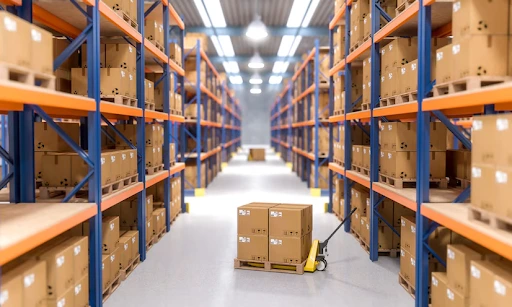
 Health Care
Health Care.jpg)
The healthcare supply chain is a critical backbone of the medical industry, ensuring the timely delivery of essential medicines, equipment, and services to patients. However, this intricate network faces numerous challenges that threaten its efficiency and reliability. From managing fluctuating demand and supply disruptions to navigating regulatory complexities and ensuring product quality, these challenges can hinder the ability to provide timely care.
The global COVID-19 pandemic further underscored the vulnerabilities in the healthcare supply chain, with widespread shortages and logistical hurdles highlighting the urgent need for robust systems. In today’s dynamic environment, addressing these challenges is imperative to safeguard patient care and support public health.
This blog explores the top challenges faced by the healthcare supply chain and emphasizes the need for innovative solutions, collaboration, and technology integration to build a resilient and adaptive system capable of meeting the growing demands of modern healthcare.
This challenge involves unexpected events such as pandemics, natural disasters, or geopolitical issues that disrupt the smooth flow of medical supplies. It leads to delays, stockouts, and inefficiencies in delivering critical items like medications and PPE. Healthcare systems often struggle to adapt quickly, impacting patient care quality.
Disruptions strain resources and require emergency responses like expedited shipping or finding alternative suppliers, which increases costs. Additionally, unpredictable situations expose vulnerabilities in the supply chain, highlighting the need for greater resilience and risk management strategies.
Tips to Improve Resilience:
Healthcare supply chains must navigate strict regulations governing product safety, quality, and traceability. Constantly changing standards make compliance complex, requiring organizations to stay updated and adapt processes, especially in pharmaceuticals and medical devices. Non-compliance risks hefty penalties and reputational damage.
These challenges necessitate investments in training, technology, and documentation systems to meet compliance requirements. Ensuring adherence often adds to operational costs and slows decision-making, creating a delicate balance between speed and regulatory fidelity.
Techniques to Ensure Compliance:
Rising healthcare costs pressure organizations to optimize their supply chains while staying within budget. Balancing quality with cost efficiency involves negotiating supplier contracts, reducing waste, and enhancing procurement strategies. Mismanagement here can lead to inefficiencies and financial strain.
Cost constraints push healthcare providers to adopt innovative solutions like group purchasing organizations (GPOs) or lean inventory management practices. However, limited budgets can restrict investment in advanced supply chain technologies that improve overall efficiency.
Strategies for Effective Cost Management:
Accurately predicting demand is critical in healthcare due to the life-saving nature of many supplies. Errors in forecasting can lead to overstocking or shortages, both of which have severe consequences. Overestimating wastes resources, while underestimating risks patient outcomes.
Advanced analytics and real-time data integration are increasingly used to improve forecasting accuracy. Effective inventory management systems ensure optimal stock levels, but implementation challenges persist, particularly in facilities lacking digital capabilities.
Techniques for Accurate Forecasting:
Dependable suppliers are essential for consistent supply chain operations. Issues like late deliveries, quality problems, or supplier bankruptcies create disruptions. Building and maintaining strong supplier relationships is vital for reliability and effective collaboration.
Healthcare organizations often establish long-term agreements and conduct regular performance evaluations to ensure supplier reliability. Diversifying the supplier base and developing contingency plans can mitigate risks, though these strategies add complexity and cost.
Best Practices for Supplier Management:
Fragmented data and siloed systems hinder supply chain efficiency and decision-making. Lack of transparency complicates tracking, forecasting, and regulatory compliance, leading to delays and errors. Improved data visibility is critical for proactive management and informed decisions.
Adopting integrated digital platforms, like ERP systems, enhances collaboration and visibility. However, implementation costs and resistance to change among staff can be significant barriers, especially in resource-constrained organizations.
Techniques to Improve Data Integration:
Healthcare supply chains rely on timely transportation to deliver critical items. Factors like geographic barriers, climate conditions, and unreliable carriers can cause delays. In emergencies, logistical bottlenecks can significantly impact patient care.
Optimizing logistics involves adopting real-time tracking systems, working with specialized carriers, and developing robust contingency plans. Rising transportation costs and limited infrastructure, however, continue to pose ongoing challenges.
Techniques to Overcome Transportation Issues:
The future of healthcare supply chains lies in leveraging technology to optimize efficiency, reduce costs, and ensure seamless delivery of medical products. However, managing these supply chains is complex due to regulatory compliance, inventory challenges, fluctuating demand, and the need for real-time data. A third-party provider is essential to address these challenges, offering specialized expertise, scalability, and advanced tools to streamline operations.
Invensis is a trusted partner in healthcare BPO services, delivering tailored solutions through cutting-edge software. We offer inventory management, order processing, procurement, and regulatory compliance services to optimize your supply chain. Our robust platforms enable real-time tracking, analytics, and reporting to ensure accuracy and transparency. Contact us to focus on patient care while we handle supply chain intricacies, delivering cost-effective, efficient, and compliant operations.
Blog Category

Adding products to your store is easy with our guide on how to upload products in BigCommerce. Follow these steps for a seamless upload experience.
April 17, 2025
|

Managing accounting in restaurants involves meticulous tracking of expenses, revenue, and inventory to ensure financial health and operational efficiency. Read our detailed guide now!
April 17, 2025
|

Inventory risks can cause inventory management to go sideways. Learn about the different types of inventory risks, their impacts and how to deal with them effectively.
April 17, 2025
|
